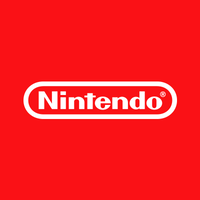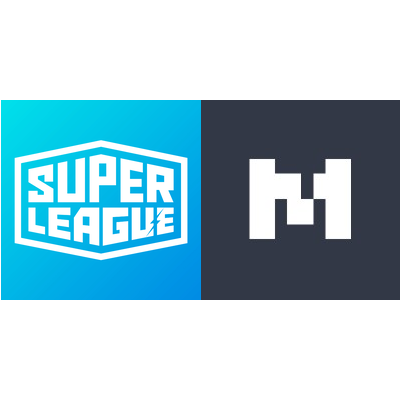Interview: Fyber's Offer Yehudai Talks Programmatic, Subscriptions and Getting In-Game Ads Right
by on 18th Oct 2019 in News


Earlier this year mobile monetisation platform outfit Fyber launched a significantly reworked version of its Fyber FairBid technology, having celebrated 10 years in business in the previous months.
But what have the team learned about the changing in-game advertising landscape over that decade? And what does it mean that Fyber FairBid offers a unified auction technology for app bidding 'built from the ground up for the in-app programmatic era'?
TheGamingEconomy caught up with Fyber president Offer Yehudai to learn more about the company's outlook on contemporary in-game adverting, the opportunities and challenges ahead, and the potential of what it calls its most significant release in 10 years.
How have you seen consumers' or gamers' relationship with in-game
mobile ads change in recent months and years?
Just as TV once could do, in-app games provide advertisers with an ability to
capture the consumer’s imagination with highly creative and interactive ads. Mobile
games allow marketers to reach consumers at scale, and to engage them with highly
creative ads - it is perhaps the closest the digital world can get to the TV advertising
we once knew.
What’s more, rewarded video gives consumers the option to watch an ad in
exchange for something - whether that’s additional content or in-game perks.
Rewarded video ads typically play between levels in a mobile game, and often allow
users to unlock the next level by watching an ad; it’s opt-in advertising that is
entirely initiated by the user, which is incredibly unique. We’re in an era where
customers expect something in exchange for their attention. Innovative ad formats,
like rewarded video, stand as a perfect value exchange for users.
How can programmatic advertising be used to provide in-app revenue
uplift? How can the move away from the waterfall model to a header bidding
approach help boost revenue for developers?
Programmatic, along with header bidding, is the great equaliser. When all buyers
compete simultaneously for impressions, the publisher is able to sell inventory to the
parties willing to pay the most for it, and buyers have a fair shot at acquiring the
users they value most.
The shift to programmatic also means a 'shift to automation' for publishers. We work
with hundreds of gaming publishers and developers who have to suffer an enormous
overhead managing their daily monetisation and optimisation routine through many
dashboards, copy/pasting values from one dashboard to another, etcetera, just to be able
to execute simple actions. The shift to programmatic reduces the overhead
dramatically while still enabling our customers to maintain direct relationships with
their mediated networks partners.
Publishers also benefit from the dynamic nature of programmatic. There are times
when the value of their inventory will spike because a buyer is looking for a specific
user type, and is willing to pay top dollar for it. And because programmatic generates
impression-level detail, publishers can glean a lot of insight as to who purchases
their users, at what price, time of day, and so on.
Do you see potential in the subscriptions model, with regard to monetising
mobile gaming? How can developers make that work for players and
monetisation?
Apple Arcade and Google Stadia are certainly enticing options for developers -
once a game is accepted, they’re paid a fee and freed of all those expensive UA
campaigns. In other words, they can spend their time doing what they love to do
best: create games.
But these subscription services raise a lot of questions for developers and the
industry as a whole and may force the developers hand to make a difficult decision.
We’ve heard rumblings that subscription services may demand exclusivity, meaning
if Apple Arcade offers a game, it can’t be available on any other platform or in app
stores. If exclusivity becomes the standard, developers will need to decide how to
best monetise existing and future games.
What’s more, with these services, developers have to turn over control of their game,
including their customers to the subscription business. Given the heavy importance
placed on customers, this seem an unfavourable step. And, what becomes of
advertising, which does actually offer many benefits to developers and gamers alike?
In my opinion, some consumers who won’t buy in-app have plenty of ways to access
the gems, gold coins, tickets, or whatever virtual currency they need to advance in a
game. If those incentives go away, are they just as invested in the game? If you
remove all barriers to gameplay, is it as fun? Some may like it, some may not.
This model raises another question for advertisers surrounding game economics and
competitive positioning. In in-game advertising, it is often other developers who
advertise other games, which means players are constantly exposed to the latest
and greatest options - a cycle that keeps the entire game ecosystem fresh, vibrant,
and competitive. Will that be lost if all games move to a subscription model service?

Fyber FairBid's redesigned dashboard
What about getting integration into a game right? What can developers do
to make sure the ads aren't deemed as obstructive to the gameplay
experience?
Developers need to have the gamer in mind; think of advertising as a value
exchange where the player is rewarded for watching an ad during the game. The
rewards need to help players advance and give them more time with the game,
which in turn gives the advertiser more time to share more ads during gameplay.
They exist to help players achieve their objectives so the trade-off must be
meaningful, valuable, and served at the right time.
Ads give brands a chance to be a superhero - allowing them to give players the extra
boost they need to continue playing, whether that’s extra moves, lives, energy, or
tokens, this is the opportunity for brands to swoop in and save the day. Until then,
keep gameplay sacred and do not interfere with the flow of the game.
Also, it’s important to recognise that not all players want to watch ads during
gameplay. Give players an easy option to get out of the ad and continue playing if
that’s their prerogative.
As with any truly great digital advertising - if you create a fun experience that actually
speaks to and benefits the users, they will pay attention. Not all gamers are created
equally; some are avid users while others dip in and out depending on what their
lifestyle allows. If you know your audience, you can optimise your advertising based
on their consumption patterns.
What are the most significant challenges facing in-app advertising, and how
can these be overcome going forward?
The biggest challenge we have right now is the ad buying infrastructure itself. At
the moment, the waterfall approach doesn’t give advertisers a fair chance to reach the consumers who are critical to their campaigns since buyers are ranked based on
their historical performance, not what they are actually willing to pay for that
impression. This challenge can be addressed with in-app bidding, though admittedly
we are still taking baby steps when it comes to transitioning to a fully programmatic
environment in-app.
The other challenge is that the in-app market still lags behind the web - when brands
advertise on the web, they have access to precise targeting, as well as tools for
measuring and validating an audience, and ensuring that their ads are in view. The
in-app market isn't as mature, although we are starting to see tremendous changes
with measuring viewability, detecting and blocking fraud, analysing data quality, and
creating transparency.
And could you give a brief overview of Fyber FairBid, and how it is
distinct in the today's game ad tech landscape?
There are three principle differentiators of Fyber FairBid
Fyber FairBid is a new ad mediation platform – it has been built from the
ground up to support the transition from pure waterfall to a programmatic
environment. The platform is different to others on the market because it has
been specifically designed to give users the flexibility to customise their ad
monetisation experience using a unified auction that supports both waterfall
and real-time bidding integrations. In other words, pubs have the option to
either manually set up how demand partners are prioritised, or let demand
prioritisation be handled dynamically.
We’ve also upgraded our reporting tool, Dynamic Reports. It’s a pivot-based
user interface combining meditation and programmatic demand in a single
view. It compares metrics for traditional ad networks, programmatic mediation
ad networks, and programmatic demand partners like DSPs and Ad
Exchanges.
The third differentiator is impression-level revenue data. For the first time
ever, publishers will have access to revenue generated by every impression.
By sending impression-level data to a publisher’s own servers, they have
complete transparency into where their money is coming from.
Ad TechAdvertiserAdvertisingApp StoresAppleAudienceCreativeDeveloperDisplayGamingHeader BiddingIn-AppInventoryMobileMonetisationPlayablesPlayersProgrammaticPublisherRetargetingRewarded VideoTargetingTechnologyUncategorizedUser AcquisitionVideoViewability







Follow TheGamingEconomy